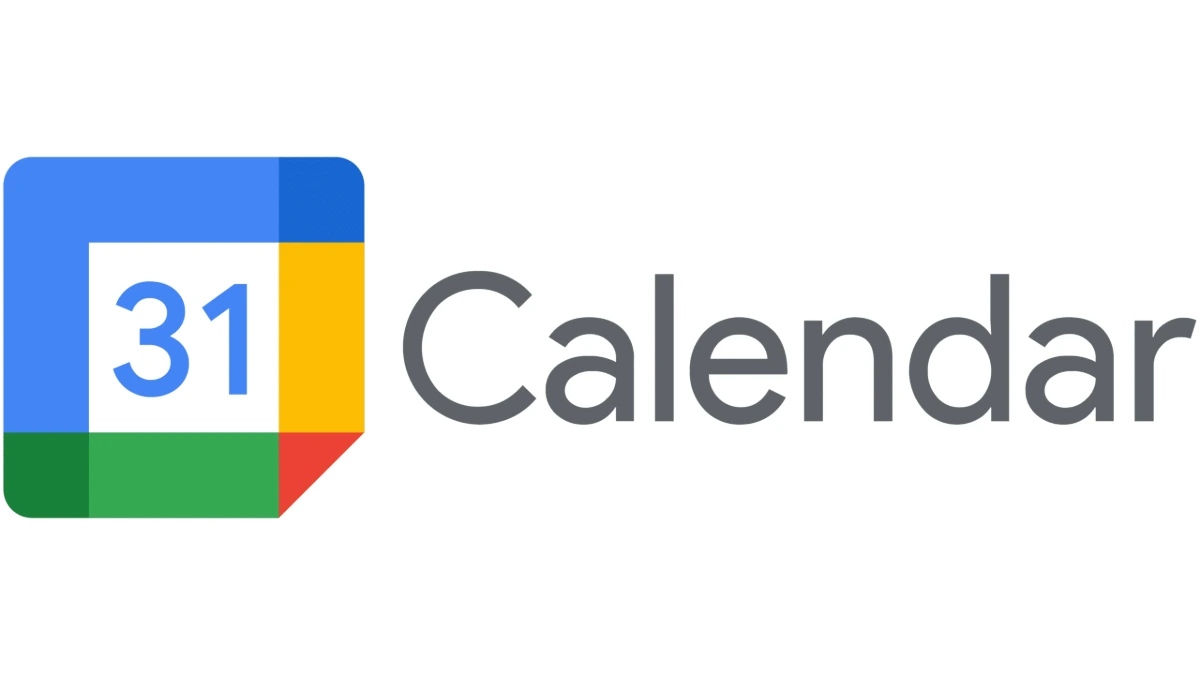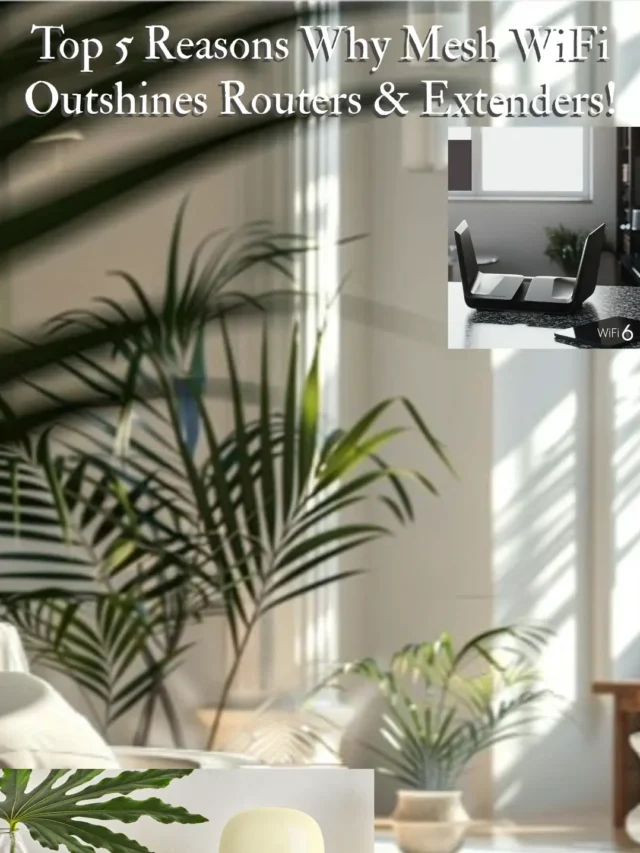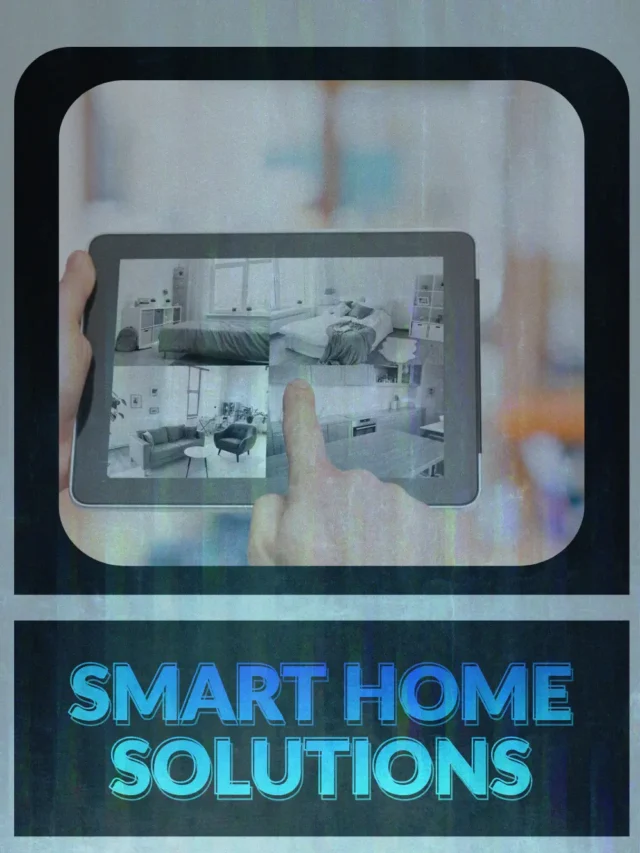Table of Contents:
Productivity Tools
Related Stories
Google Calendar is a powerful time-management and scheduling service by Google that helps individuals and teams organize their time efficiently. Launched in 2006, Google Calendar has grown into one of the best scheduling tools available, thanks to its rich features and seamless integration with other apps. In this comprehensive guide, we’ll explore key Google Calendar features, share productivity tips, and even touch on the Google Calendar API for tech-savvy users.
Whether you’re a beginner just getting started or an advanced user looking to optimize your workflow, this article will help you leverage Google Calendar to its fullest. #googlecalendar #googlecalendarsharing #calendar #calendar2005
Google Calendar

Google Calendar is more than just a digital datebook – it’s a central hub for managing events, appointments, and reminders across all your devices. It allows users to create and edit events with ease, set custom reminders, invite guests, and add locations or video conferencing links. Because it’s a cloud-based tool, your calendars stay synchronized on the web, your smartphone, and your computer in real time.
Google Calendar’s tight integration with other Google services (like Gmail, Meet, and Tasks) and its sharing capabilities make it a productivity powerhouse for both personal and professional scheduling. In the sections below, we’ll dive into its key features and offer tips on how to make the most of this application.
Key Features of Google Calendar
Google Calendar comes packed with user-friendly features designed to simplify scheduling. Let’s take a look at some of its most useful functions:
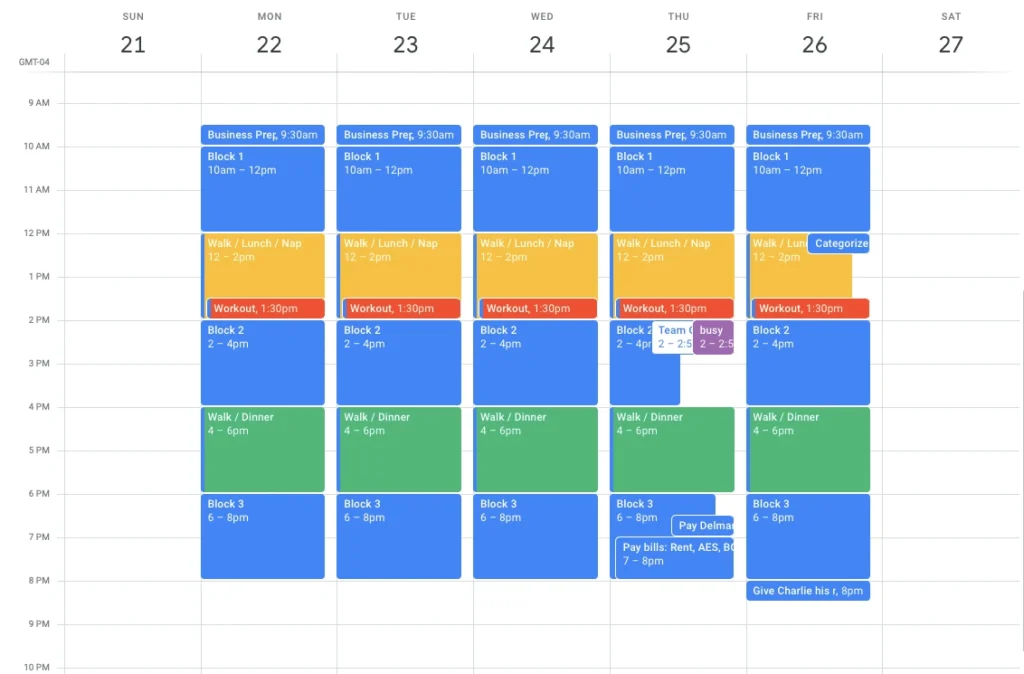
Event Creation & Reminders
Creating events in Google Calendar is quick and intuitive. You can click or tap on a date and start typing to add an event, or use the “Create” button to input more details. Events can include a title, date and time (with support for all-day or multi-day events), location, description, and guests. You can even attach files from Google Drive for meeting agendas or notes.
Google Calendar allows multiple reminder notifications for each event – for example, an email reminder one day before and a pop-up notification 10 minutes before the event. These reminders ensure you never miss an important meeting or deadline (Google Calendar – Wikipedia).
Additionally, events can be set to repeat (recurrence), which is perfect for scheduling weekly team meetings, birthdays, or any regular activity. When creating an event, simply set it to repeat daily, weekly, monthly, or in a custom pattern, and Google Calendar will generate all future instances automatically.
Multiple Calendar Views (Day, Week, Month, etc.)
Google Calendar offers flexible calendar views so you can visualize your schedule in different ways. You can toggle between Day view, Week view, Month view, Year view, or an Agenda/Schedule view that lists events chronologically (9 Google Calendar features you should start using now – Zapier). There is also a customizable 4-day or 5-day view if you prefer to see a workweek at a glance.
These view options make it easy to zoom in on a busy day or get a broad overview of your month’s schedule. For instance, the Day and Week views show hourly time slots which are great for detailed scheduling, while the Month view provides a traditional calendar grid to see events spread out over weeks.
Google Calendar remembers your preferred default view (which you can change in Settings), and you can quickly switch views using keyboard shortcuts (more on those later).
Integration with Gmail, Meet, and Other Apps
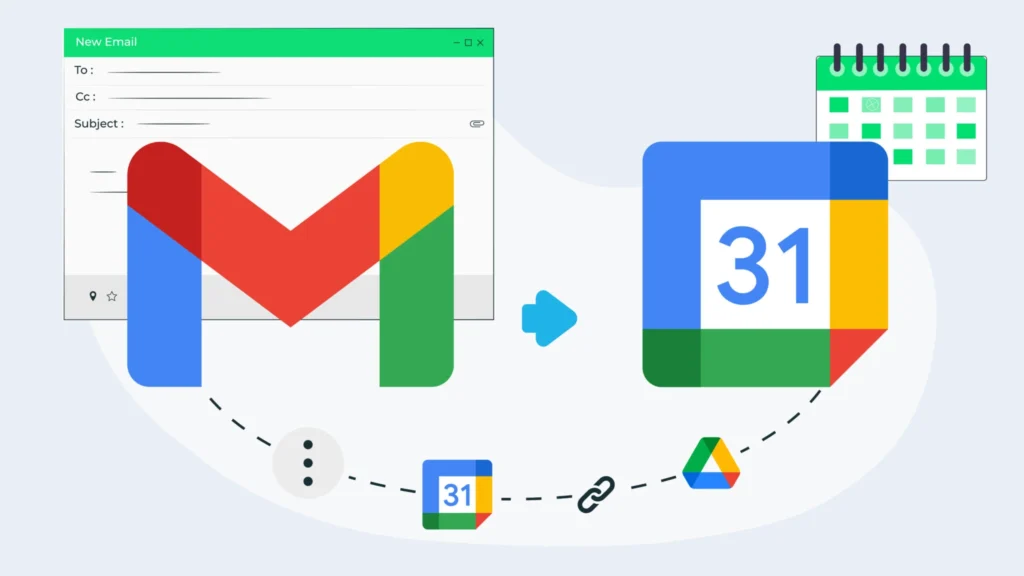
One of Google Calendar’s standout strengths is its integration with other Google Workspace apps. Notably, Calendar ties in closely with Gmail: if you receive an email about a flight, hotel reservation, concert ticket, or other event, Gmail can automatically add it to your calendar (with details like confirmation numbers and flight times).
This “Events from Gmail” feature means your travel and booking plans appear in Calendar without manual entry. Google Calendar also integrates Google Meet for video conferencing – when you create an event and add guests, a Meet video meeting link can be added with a single click. This makes scheduling virtual meetings seamless, as invitees can join the meeting from the calendar event.
The integration doesn’t stop there: Calendar works with Google Tasks (to display your task deadlines on the calendar), Google Keep (you can add notes and see them alongside your schedule), and Google Maps (event locations link to maps and estimated travel times). For those using Google Workspace, Calendar also interacts with Gmail’s “Out of Office” and “Appointment Scheduling” features, further streamlining your workflow. These integrations collectively make Google Calendar a central productivity hub for managing both your time and your tasks.
Time Zones & World Clock Support

Scheduling across different time zones can be challenging, but Google Calendar includes robust time zone support to make it easier. You can set a specific time zone for an event – ideal for coordinating meetings with international participants. When guests in other time zones view the invite, Google Calendar automatically converts the event time to their local time so everyone is on the same page.
In your Calendar settings, you can also enable a secondary time zone alongside your primary one, which will display dual times on your calendar view (for example, showing both New York and London times). This is very useful if you frequently work with colleagues or clients in another city. Furthermore, on the desktop version Google Calendar offers a World Clock feature that can be enabled in the settings.
The World Clock lets you add multiple cities or time zones and then shows the current time in those locations in a little panel on the calendar sidebar. This way, you can quickly check, say, what time it is for a teammate abroad before scheduling a call. With these tools, Google Calendar takes the guesswork out of managing events across time zones.
Goals & Smart Scheduling
Google Calendar isn’t just for meetings you already have – it can help you find time for the things you want to do. The Goals feature (available in the mobile app) allows you to set personal goals, like exercising three times a week or learning a new language, and Calendar will automatically schedule time for those goals. You simply specify the type of goal, how often and for how long you want to do it, and your general preferred time (morning, afternoon, or evening). The app then finds open slots on your calendar to pencil them in.
If a conflict arises (for example, you schedule another event over a goal time), Google Calendar’s smart scheduling will automatically reschedule the goal to another free slot. It learns from your deferrals and completions – over time, it gets better at choosing optimal times when you’re likely to accomplish the goal.
Apart from Goals, Google Calendar also provides smart suggestions when creating events – for instance, it may suggest event titles or locations based on your past entries and it can automatically find free times for all guests with the “Find a time” feature.
The Google Calendar mobile app allows setting personal “Goals” (e.g. exercise, study) in addition to standard Events and Reminders. The app finds free slots in your schedule to automatically place these goal sessions.
How to Use Google Calendar Effectively
Beyond understanding Google Calendar’s features, knowing some tips and tricks will help you use it more effectively. Here are several ways to optimize your calendar usage for better organization and efficiency:
Setting Up Recurring Events
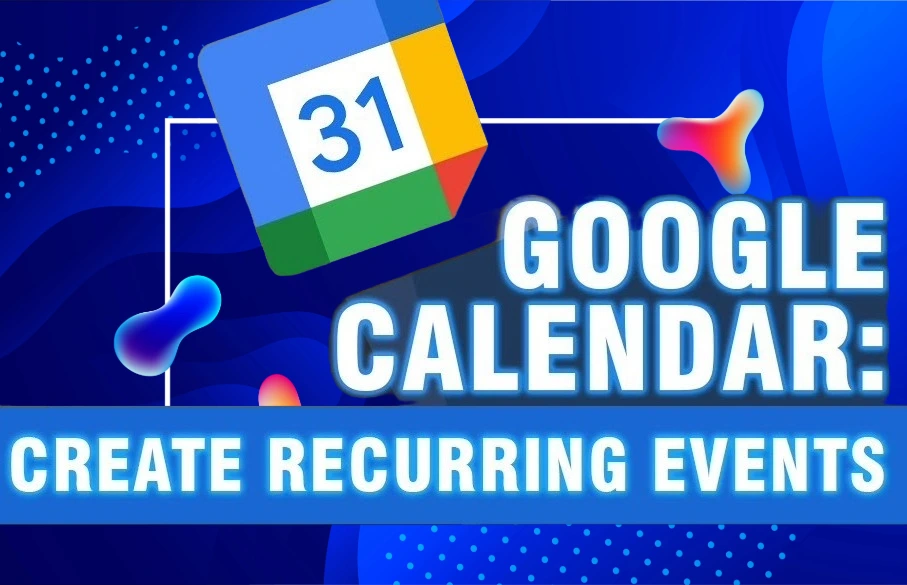
If you have events that repeat on a regular schedule, take advantage of Google Calendar’s recurring event settings. Instead of manually entering an event each time, you can set it to repeat with a few clicks. When creating or editing an event, look for the “Does not repeat” (or “Repeat”) dropdown – selecting this opens recurrence options.
You can choose common intervals like daily, weekly, monthly, yearly, or set a custom repetition (for example, every 2 weeks on Tuesday and Thursday, or the last Friday of every month). You can also specify an end date for the series or number of occurrences (e.g. stop after 10 occurrences).
This is perfect for scheduling things like a bi-weekly team sync, a monthly book club, or a yearly reminder to renew a subscription. Google Calendar will generate all the recurrences and link them as a series, making it easy to update or cancel all future instances if needed.
Color-Coding and Organization Tips
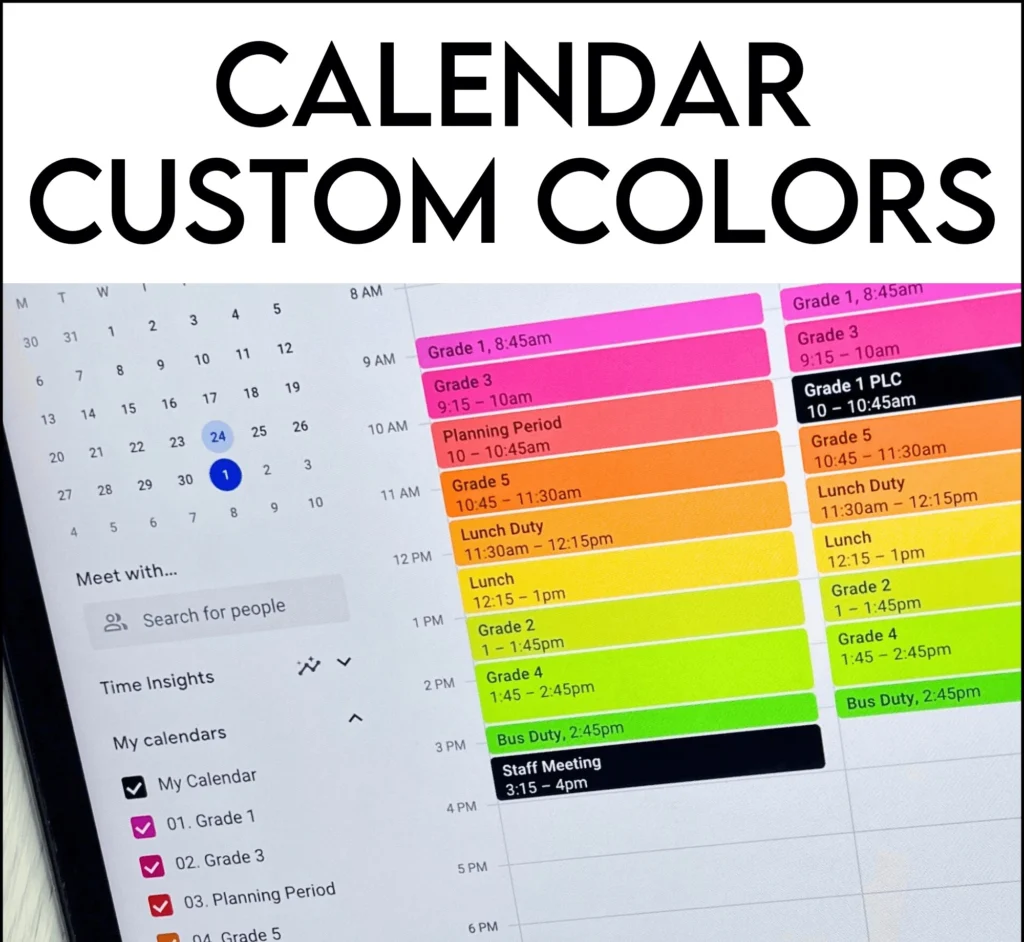
A great way to make your calendar more readable at a glance is to use color-coding. Google Calendar lets you assign a color to each calendar in your account, and also lets you pick custom colors for individual events. For example, you might color your work calendar blue and your personal calendar green, or use different colors to distinguish project deadlines, social events, and reminders.
This visual categorization helps you scan and immediately recognize the type of event. On the left sidebar under “My calendars,” click the three-dot menu next to a calendar’s name to pick a color or choose “+ Create new calendar” to make separate calendars for different purposes (work, personal, holidays, etc.). The same menu also provides “Settings and sharing” for that calendar. Color choices are saved across devices and shared with others if the calendar is shared.
In addition to colors, consider organizing your schedule by creating multiple calendars for different domains of your life. Google Calendar allows you to overlay multiple calendars – for instance, you might have one for work meetings, one for family activities, one for personal reminders, and maybe a shared team calendar. All can be viewed together (with different colors) or toggled on/off individually from the sidebar. This layered approach keeps things organized.
Keyboard Shortcuts for Efficiency
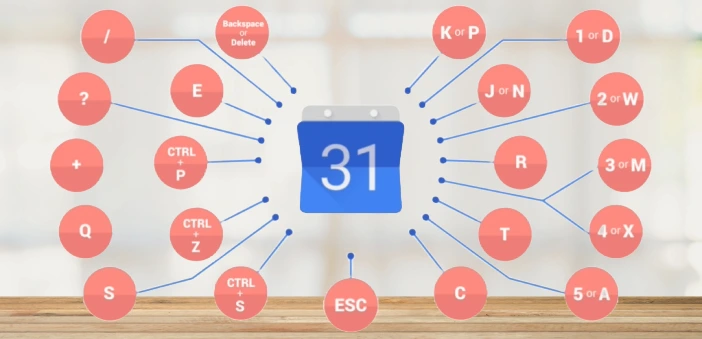
If you frequently use Google Calendar on a computer, learning a few keyboard shortcuts can dramatically speed up your workflow. Google Calendar has a number of built-in shortcuts (make sure you have “Enable keyboard shortcuts” turned on in your Calendar settings). Here are some useful ones to get started:
Create an event: Press C to quickly open the event creation dialog (no need to click the “Create” button). This is a fast way to start adding a new event.
View today’s date: Press T to jump to Today on the calendar. This centers the calendar on the current day.
Navigate by period: Press N for Next period and P for Previous period. For example, if you’re in Week view, N goes to the next week.
Switch calendar view: Use D for Day view, W for Week, M for Month view. (Google Calendar also supports other view toggles like Y for Year or A for Agenda, and X for custom 4-day view.)
Search: Press / (forward slash) to focus the search bar and find events by keyword.
Other handy shortcuts: Q opens the Quick Add event popup (useful to create an event with just a few words), E opens the selected event to Edit and Delete key will delete a selected event (after confirmation). You can press? (Shift + /) at any time to bring up the full list of Google Calendar shortcuts in-app.
Using shortcuts like these can make scheduling and navigating your calendar much faster for power users. For example, if you want to see your agenda for next week, you could simply press W (Week view), then N (next week), and A (Agenda view) in quick sequence. Learning even a few of these commands is a great productivity tip for Google Calendar.
Syncing with Other Calendars (Outlook, Apple Calendar, etc.)
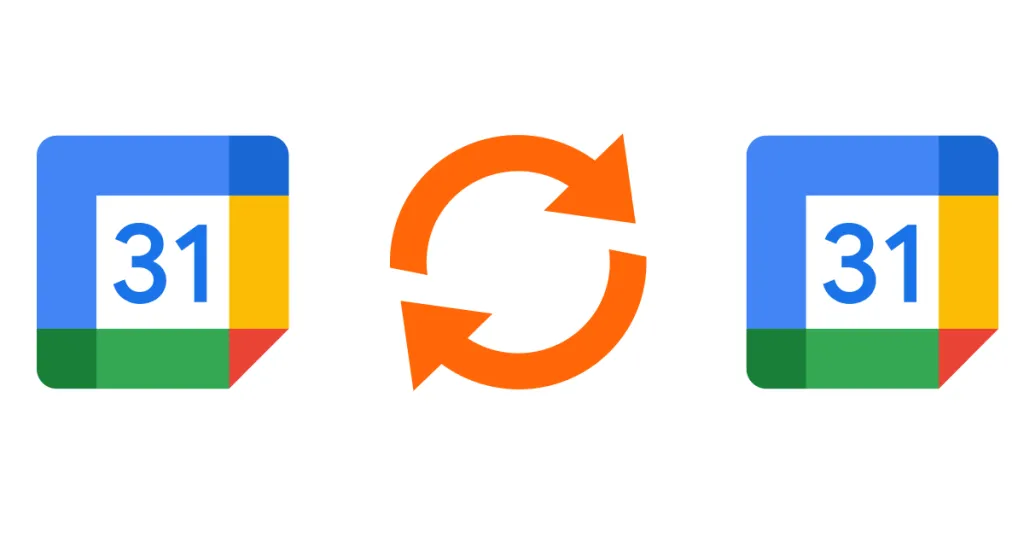
Google Calendar plays well with others. If you use Outlook, Apple Calendar (iCal), or another calendar app, you can sync them with Google Calendar so that your events appear across platforms. One common method is via the iCal format (ICS) feed. In Google Calendar’s settings for a specific calendar (under Integrate Calendar), you’ll find a “Secret address in iCal format” – this is a private URL you can use to subscribe to your Google Calendar from other apps.
For example, in Outlook on desktop, you can add an internet calendar subscription using that URL, and your Google Calendar events will show up in Outlook (and stay updated). Similarly on Mac or iPhone, you can add your Google account in the Calendar settings or subscribe to the feed URL to see Google Calendar within the Apple Calendar app.
Conversely, if you have events in another system that you want to bring into Google Calendar, you can usually export them as an .ics file or use a feed. Google Calendar supports importing .ics files (and CSV files) via the Import & export menu. This is useful for a one-time migration of data (for example, importing a holidays calendar or migrating from Outlook to Google).
Keep in mind that an imported static file won’t continuously sync—so for ongoing two-way sync, using account integration or subscription is better. Fortunately, Google Calendar on mobile can directly sync if you add your Google account to your device: on iOS, for instance, adding your Google account under Settings > Calendar > Accounts will allow the native Apple Calendar to show Google events.
Sharing & Collaboration in Google Calendar
Google Calendar isn’t just for personal scheduling – it’s also a collaborative tool. It allows you to share calendars with others, which is extremely useful for coordinating in team environments or even within a family. Here’s how to take advantage of Google Calendar’s sharing and collaboration features:
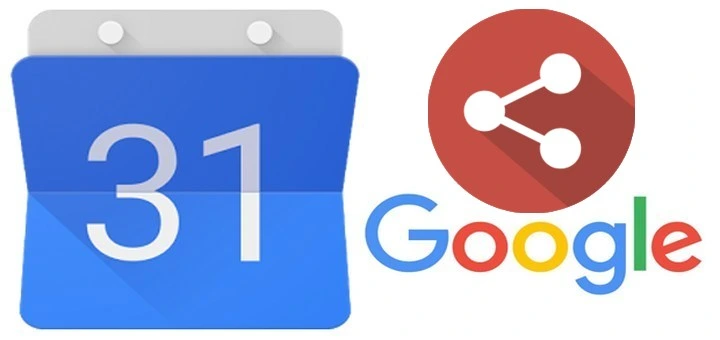
Sharing Calendars with Others
You can share any of your calendars with other Google users, letting them see your schedule or even co-manage events. To share a calendar, go to the left sidebar, under “My calendars,” find the calendar you want to share, click the three-dot Options menu, and select “Settings and sharing.” In the settings page, scroll down to “Share with specific people or groups.” Here you can Add people by entering their email address.
For example, you might share your work calendar with your teammates or share a family calendar with your spouse so you can both add and view events. Google Calendar will send an invitation to the people you’ve added, and once they accept, your calendar will appear in their account (typically under “Other calendars”).
When sharing, consider what level of access you want to give. Sometimes you may want others to only see when you are free or busy, without exposing the event details (for privacy). In other cases, full transparency and edit rights make sense (such as among a small team). Google Calendar provides different permission levels you can set for each person you share with:
See only free/busy (hide details): The person can see your calendar’s blocks of time as “busy” or “free” but cannot see any details like event names or attendees.
See all event details: The person can view all details of events on the calendar (title, location, description, etc.) but cannot make changes.
Make changes to events: The person can edit your events (add, change, or delete events) on that calendar.
Make changes and manage sharing: The person has full control – they can edit events and share the calendar with others (essentially co-owner rights).
For instance, you might give your assistant full manage access to your work calendar but give your coworkers “See all details” access and perhaps give an external business partner just free/busy visibility. These granular permissions ensure you can collaborate while still maintaining appropriate privacy and control.
Once a calendar is shared, all shared users will see it updated in real time. You can also stop sharing at any time or change someone’s access level through the same settings page. Google Calendar sharing is an excellent way to coordinate team schedules (so everyone knows who is out of office or available for a meeting) and to plan events like family gatherings or project timelines with multiple people.
Embedding Calendars on Websites
If you want to make a calendar publicly visible or embed it on a website (for example, a company events calendar or a community schedule), Google Calendar has an embed feature. In the calendar’s settings (under Integrate Calendar), you’ll find an HTML <iframe> code that you can copy and paste into a website to display that calendar.
You can customize the appearance (size, default view, colors) of the embedded calendar. This is commonly used by organizations to show calendars on their websites – for instance, a school might embed a calendar of holidays and events on their site. Note that to embed a calendar publicly, you will need to adjust the access permissions: under Access permissions in the settings, you can choose to make the calendar public (visible to everyone) or share it with all members of your organization if you’re using Google Workspace.
Public calendars can either show full event details or just free/busy info, depending on what you prefer to expose. Once that’s set, the embed code will allow anyone (even without a Google account) to view the calendar on your webpage.
Booking Appointments with Appointment Slots
For those who need to allow others to book time with them (such as teachers with office hours, or consultants with clients), Google Calendar offers an appointment slots feature – recently updated and improved as Appointment Schedules. This feature lets you allocate a block of time on your calendar (say, Friday 2pm-5pm) and split it into smaller appointment slots (e.g. 30-minute slots).
Others can then reserve one of those slots with you, and it will automatically create an event on both your and their calendars. Originally available to Google Workspace (professional) accounts as “appointment slots,” Google rolled out a newer version called Appointment Schedule which is more user-friendly and even available to some personal accounts now.
With appointment schedules, you can generate a booking page link. When someone visits your booking page, they see your available time slots and can book an appointment in one click – no back-and-forth emails needed. This tool is great for situations like scheduling student-professor meetings, client consultations, or any scenario where you want to offer controlled access to your time.
To use it, look for “Appointment Schedule” when creating a new event (or in the Create menu). You can set the duration of slots, add a description (e.g. meeting agenda or location), and share the booking page link with people. You can even embed the booking page on a website. Once an appointment is booked by someone, that slot is taken and won’t be available to others. Both parties receive calendar invites automatically.
Collaboration and Calendars for Teams
In a team setting, Google Calendar can be a central tool for collaboration. We touched on sharing calendars with specific people, but if you’re using Google Workspace (formerly G Suite) within an organization, administrators can set up company-wide calendars (like a PTO calendar or meeting room calendars) that everyone can see. Team members can check colleagues’ availability (with appropriate permission) which is extremely helpful when scheduling meetings – the Find a time or Schedule view in the event editor lets you overlay invitees’ calendars to pick a slot when everyone is free.
Google Calendar also supports creating events and inviting guests who are not on Google – you can invite any email address, and they can respond via email or see the event details through a Google Calendar link. For project planning, you might create a dedicated project calendar that is shared with all stakeholders; milestones and deadlines can be mapped out there, separate from individual calendars. Because Google Calendar updates in real time, it serves as a single source of truth for who is doing what and when.
Team members can subscribe to each other’s calendars to stay in the loop (e.g. a manager viewing their team members’ calendars to schedule 1:1 meetings). There’s also an option to “Subscribe to calendar” for public calendars – for example, you could subscribe to a coworker’s public travel calendar to know when they are out of office. All these collaborative features make Google Calendar an essential tool for transparency and coordination in group environments.
Google Calendar API for Developers
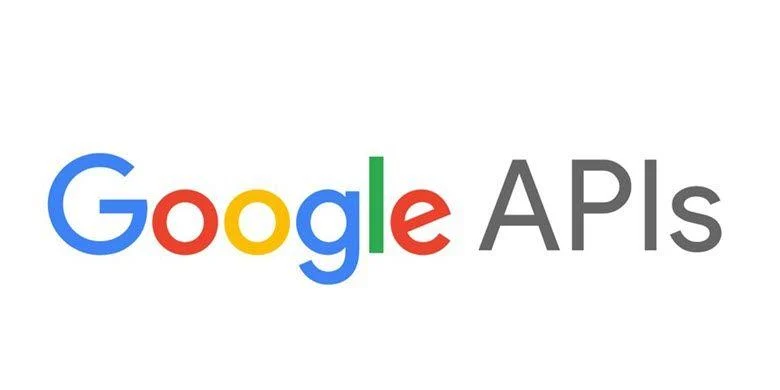
Google Calendar isn’t just for end-users; Google also provides an API (Application Programming Interface) that allows developers to interact with calendar data programmatically. The Google Calendar API opens up possibilities for automation, integration with other software, and custom extensions of Calendar’s functionality. Here’s an overview of what the API can do and how to get started with it:
Overview of the Calendar API
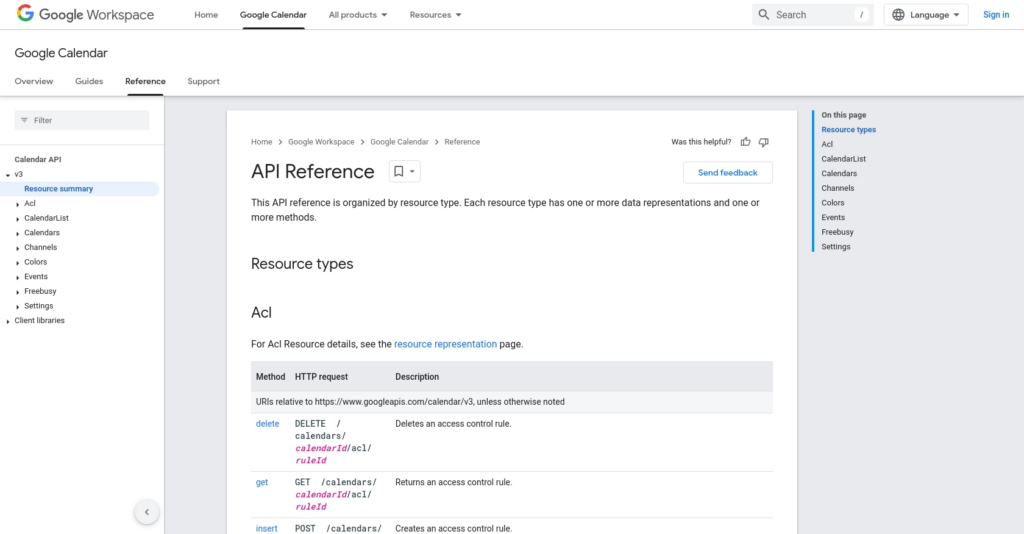
The Google Calendar API is a RESTful web API that enables applications to retrieve, create, modify, and delete calendar events, as well as manage calendars and calendar settings, on behalf of a user or for an application. In essence, anything you can do in the Google Calendar app, you can do through the API – but in an automated fashion. This allows businesses and developers to integrate Calendar with their own systems. For example, a CRM system might use the API to automatically create calendar events for sales calls, or a custom app might pull a user’s events to display a dashboard of their daily schedule.
The API can also be used for company-wide scheduling tools, booking systems, or analytics on calendar usage. Because it’s part of the broader Google APIs, it uses Google’s standard authentication protocols (OAuth 2.0 for user data access, or service accounts for server-to-server scenarios). Google provides client libraries in many languages (JavaScript, Python, Java, PHP, etc.) to simplify calling the Calendar API.
Common Use Cases for the API
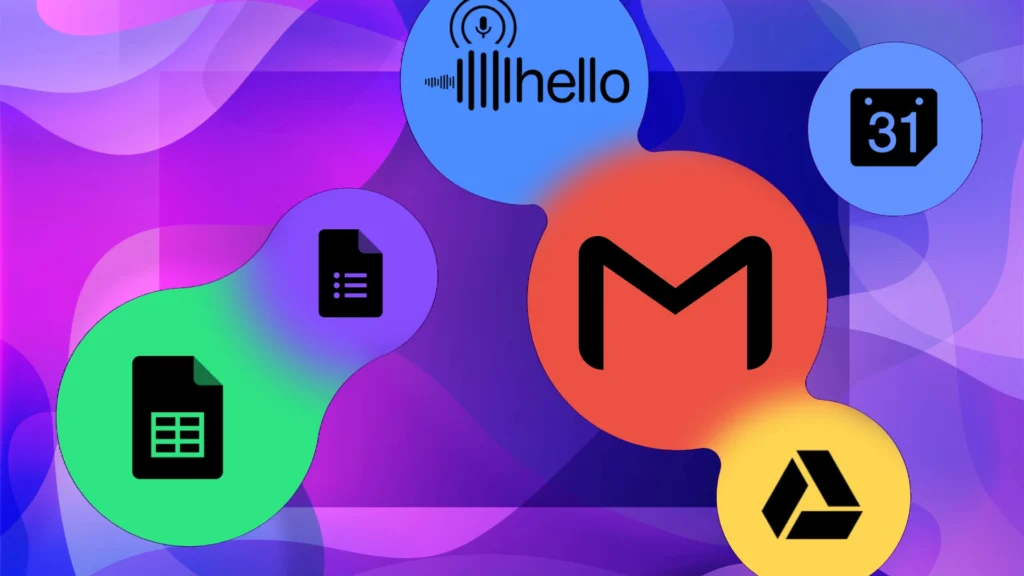
There are many real-world use cases for the Google Calendar API. A few examples:
Automating event creation: Perhaps you have a ticket booking site – when a customer books an appointment, you could use the API to automatically add the event to a staff member’s Google Calendar and send an invite to the customer. This removes the need for manual entry and ensures both parties get the event details instantly.
Integration with CRM or Task systems: Sales teams often schedule follow-up meetings or calls. Integrating Calendar with a CRM can automatically log meetings or create calendar events from CRM entries. Similarly, task management tools might create events for deadlines or sync tasks as all-day events.
Resource scheduling: You could manage booking of shared resources (like conference rooms or equipment) by having a dedicated Google Calendar for each resource and using the API to query availability and book slots. This is actually how Google’s own Rooms & Resources in Workspace function – each resource has a calendar.
Custom calendar front end or visualizations: Some organizations may want to display calendars in a custom interface – for example, a wall display showing a team’s schedule. Using the API, you can fetch events and display them in any format you like. You can also mash up data, e.g., combine calendar data with project data to generate reports or visuals.
Notifications and reminders outside Google Calendar: Maybe you want special notifications, like sending an SMS for certain events. An app can use the API to monitor a calendar (either by polling or using push notifications) and trigger custom alerts through other channels.
Syncing between platforms: If a user prefers a different calendar app but still needs to coordinate with Google Calendar users, an integration can sync events back and forth. For instance, syncing Outlook calendar events into Google Calendar for a user who uses both.
Analyzing calendar usage: Companies might want to analyze how employees are allocating time (meeting hours vs focus time, etc.). With appropriate consent, the API can pull events for analysis – for example, to see how often recurring meetings happen or how scheduling patterns change over time.
In short, any scenario where you think “it would be nice if this app talked to my calendar” can be a use case for the Google Calendar API. It enables a lot of workflow automation and eliminates manual double-entry of schedule information across systems.
Getting Started with the Calendar API (Basic Steps)
Using the Google Calendar API requires a few setup steps, but Google provides clear documentation and libraries to assist. Here’s a basic roadmap to get started:
Google Cloud Project: First, create a project in the Google Cloud Console. This project is a container for your API usage and credentials. You can do this by visiting the Google Cloud Console, selecting “Create Project,” and giving it a name.
Enable the Calendar API: Within your new project, go to “APIs & Services” and then the API Library. Find Google Calendar API and enable it for your project. This activates the API so your project is allowed to make requests.
Credentials and OAuth Consent: If your application will access users’ calendar data, you need to set up an OAuth consent screen and create credentials. In “APIs & Services > Credentials,” create an OAuth 2.0 Client ID (for a web app, installed app, etc.). You will specify the authorized redirect URI (for web apps) and other details. As part of this, you configure the OAuth consent screen (set an application name, privacy policy URL if required, scopes you’ll request which in this case include Google Calendar scope). If your app is internal or has limited users, you might not need a full verification, but public apps will need to be verified by Google if they request sensitive scopes.
Service Account (optional): If you’re doing server-to-server integration (for example, syncing a company resource calendar), you might use a service account instead of user OAuth. You would create a service account in the Google Cloud Console and grant it access to the relevant calendar (service accounts have their own email addresses that can be used to share calendars). This way, the app can access the calendar directly without a user login. However, for most user-specific operations, OAuth with the user’s consent is the way to go.
Pick a Client Library: Google offers client libraries in various languages that handle the nitty-gritty of authentication and API calls. For example, if you’re using Python, you’d install the google-api-python-client. If using JavaScript, you might use the official APIs Client Library for browser or Node.js. These libraries allow you to make API calls with simple methods rather than manually crafting HTTP requests.
Authentication Flow: Code your app to perform the OAuth flow. That typically means directing the user to Google’s OAuth URL with your client ID and requested scope (https://www.googleapis.com/auth/calendar for full Calendar access, or narrower scopes as needed). The user logs in and grants permission, and your app receives an authorization code which it can exchange for access and refresh tokens. The libraries can manage storing and refreshing tokens for you after this.
Make API Calls: Once authenticated, you can start calling the Calendar API. For instance, to list upcoming events you’d call the events.list endpoint on the calendar of interest (Events: list | Google Calendar | Google for Developers). To create an event, you’d call events.insert with the calendar ID and event details in the request body. The client libraries provide these as methods,
e.g. service.events().insert(...).execute() in Java or similar in other languages. You always specify a calendarId – for a user’s primary calendar, the ID is “primary”. The API uses JSON payloads for data. A simple example (in pseudocode) might be:
event = {
'summary': 'Team Sync Meeting',
'start': {'dateTime': '2025-04-01T10:00:00-04:00'},
'end': {'dateTime': '2025-04-01T11:00:00-04:00'},
'attendees': [{'email': '[email protected]'}, {'email': '[email protected]'}]
}
service.events().insert(calendarId='primary', body=event).execute()

This would create a calendar event titled “Team Sync Meeting” on April 1, 2025 from 10–11 AM EDT and invite two attendees.
Handling Responses and Errors: The API will return data for reads (e.g., a list of events in JSON) or confirmations for writes (e.g., the newly created event’s details). You should code your app to handle common errors – for example, invalid credentials, permission issues, or rate limiting responses.
The Google Calendar API documentation and Quickstart guides are very useful for walking through this setup. They even provide sample code for common tasks in each language. Starting out, it’s easiest to follow a quickstart to ensure you can do a basic operation (like list events) in your environment, then build from there.
Best Practices for API Usage
When working with the Google Calendar API (or any API), it’s important to follow best practices to ensure efficiency, security, and reliability:
Use Incremental Sync: If you need to regularly fetch calendar events, avoid pulling all events every time. The Calendar API supports query parameters for syncing – you can get a sync token when you list events, then use that token on the next call to get only events that changed since your last query. This dramatically reduces data transfer and is kinder to the API. Similarly, use filters (like
timeMin/timeMax) to limit the range of events you request when appropriate.Handle Rate Limits Gracefully: Google Calendar API enforces quotas (like a limit on requests per day, per user, etc., typically up to a few hundred thousand or million per day) and also rate limits (to prevent too many requests in too short a time). If you exceed these, the API will return an error (HTTP 403 Rate Limit Exceeded). Design your integration to handle this – use exponential backoff to retry after delays whenever you hit rate limit errors. In practice, this means if a request is denied due to quota, wait a bit (say 1 second), try again, and if it fails again, wait longer (2 seconds, then 4, etc.).
Secure Your Credentials: If using OAuth tokens, treat them like passwords. Store refresh tokens and other credentials securely (encrypted storage) and never hard-code sensitive information. If you distribute a mobile or client-side app that uses the API, use the appropriate OAuth client type and restrict API keys (for any public API keys used) to specific domains or package names.
Use Proper Calendar IDs: Remember that each calendar has its own ID (which might be the user’s email for primary calendar, or a long string for secondary calendars). Make sure you’re interacting with the intended calendar. Also, use the special keyword “primary” for simplicity when you mean the user’s main calendar.
Test Thoroughly with Sample Data: During development, use test calendars or test Google accounts. Populate them with sample events to simulate real scenarios. This way you avoid accidentally modifying real personal or production data while you refine your code.
Utilize Push Notifications if Needed: If your app needs to know about changes in real-time (e.g., an event was created or deleted in Google Calendar via another source), consider using the push notification feature of the Calendar API. You can set up a channel to watch a calendar, and Google will send a notification to a webhook endpoint you provide whenever changes occur. This is more efficient than frequent polling. It does require HTTPS endpoint setup and handling security tokens in the notification, but it’s a powerful feature for keeping in sync without constant requests.
Respect User Privacy and Preferences: If your integration is user-facing, ensure you handle cases like when a user revokes access to their Google Calendar (your app should detect a 401 Unauthorized and prompt re-auth or handle gracefully). Also, be mindful that users might have private events with limited details visible – if your app surfaces event info, ensure you respect the
privateCopyorvisibilityfields of events which indicate how much information you should show.
Following these best practices will help your application integrate smoothly with Google Calendar while providing a good experience to users and not hitting snags with usage limits. Google’s developer documentation for Calendar API includes a “Manage quotas” and “Handle errors” section that elaborates on these points. In summary, plan for scale and errors, and make use of the API’s features to minimize unnecessary calls.
Conclusion
Google Calendar has evolved into a feature-rich scheduling platform that caters to everyone from busy professionals coordinating meetings to families organizing their schedules. We’ve looked at core Google Calendar features – like easy event creation, multiple calendar views, Gmail and Meet integration, time zone handling, and mobile app benefits – that make it one of the best scheduling tools available today.
By applying the usage tips (such as recurring events, color-coding, and keyboard shortcuts), you can streamline your workflow and keep your calendar neat and informative, effectively implementing smart productivity tips into your daily routine. The ability to share calendars and collaborate with others means you can eliminate a lot of back-and-forth communication and stay in sync with your team or loved ones (how to share Google Calendar with others is as simple as a few clicks, as we saw). And for developers or power users, the Google Calendar API opens the door to integrating this tool with other systems, enabling automation and custom solutions that further boost productivity.
External References
Google Calendar Help Center – Official support documentation for Google Calendar (how to share calendars, adjust settings, etc.)
– Add a Google calendar to your website
– How To Share a Google Calendar to Any Tool.
Google Calendar – Wikipedia – Background, history, and list of features of Google Calendar
Mashable Tech: “How to share your Google Calendar” (April 13, 2024) – Step-by-step tutorial on sharing calendars and setting permissions
– How to share your Google calendar | Mashable
Shared Contacts Manager Blog: “How to Share Google Calendar (2025)” – Comprehensive guide with best practices for calendar sharing and delegation
– How to share Google Calendar with others: a Comprehensive Guide and Best Practices for 2025
Google Calendar API Documentation – Google Developers guide for Calendar API (overview, quickstart, and reference for integrating with Google Calendar)
– Using the Google Calendar API to Create Calendar Events (with Javascript examples) | Endgrate
Calendar.com Blog: “The Ultimate Guide to Google Calendar” – Detailed exploration of Calendar features like time zones, world clock, event settings, and more
– The Ultimate Guide To Google Calendar – Calendar – The Ultimate Guide To Google Calendar – Calendar).
Google Workspace Updates: “Appointment Schedules in Calendar” – Announcement and explanation of the new appointment scheduling feature replacing appointment slots (Google Workspace Updates blog)
– Embracing Google’s New Appointment Scheduling Feature – Swarthmore College – ITS Blog
